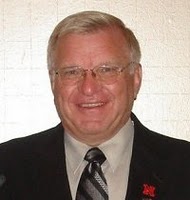 |
| U.S. Senator Deb Fischer |
Many questions surrounding this attack remain unanswered.
What was the terrorist’s path to radical Islamism?
Recently, I attended a classified briefing given by FBI Director James Comey and Department of Homeland Security Secretary Jeh Johnson to learn more about the specific circumstances of this tragedy.
While there is much we still do not know about the attack in Orlando, there are a few, very important things we do know.
We know 49 people were killed, and 53 others were injured. We know their families are suffering, and we grieve with them. We know the gay community was targeted.
There is something else we know: this attack was violence against innocent people. It was an assault on the age-old Western value of social pluralism. This principle forbids doing violence to others just because we strongly disagree with them. It’s a basic belief that unites Americans.
We have many disagreements in our country. We have them in the Senate. We have them at work and around the dinner table. Sometimes our words are heated. But we don’t kill people who disagree with us.
We protect their right to think differently. This is a key part of our identity as Americans. The Orlando attack reminds us that we are in the middle of a global battle between two ways of life: open democracy and violent jihadism.
Our way, the American way, values pluralism. It permits dissent from dominant social and political views. It protects the freedom of expression and the freedom of religion. It defends our shared human dignity. In our society, the value of your life is not determined by your views. Here, your life has value because you exist. That’s good enough for us.
That’s not good enough for radical Islamism. Its followers do not believe these things. They impose uniformity and destroy dissent. For the radical Islamist, there is no ‘live and let live.’
Their ideology demands obedience. It allows only one way to live your life. It demands that people who think differently, live differently, or pray differently stop thinking, living, and praying how they do.
Radical Islamism does not use words to get what it wants. We observe its methods in Syria, through ISIL. There, they stone women and throw men from buildings for violating their code. This contempt for other cultures drives them to destroy historical artifacts and ancient holy sites. They exterminate entire communities for practicing a different set of religious beliefs.
And, they celebrate it.
While the extent to which the Orlando shooter was influenced by this is unclear, he clearly identified with ISIL’s barbaric glorification of violence. This is why we must unite to ensure ISIL’s lasting defeat. Their defeat on the battlefield will diminish the power of their calls to butcher, pillage, and defile.
Responding to this terror is the shared responsibility of all Americans, and not reserved only for the military or law enforcement. We can all play a role in the response.
In our day-to-day lives, we can deliver a direct challenge to radical Islamists. By living out our values of pluralism, of freedom of speech, and freedom of religion we can stand against the forces of hatred and injustice.
Thank you for taking part in our democratic process. I look forward to visiting with you again next week.





